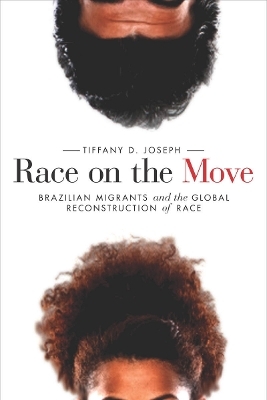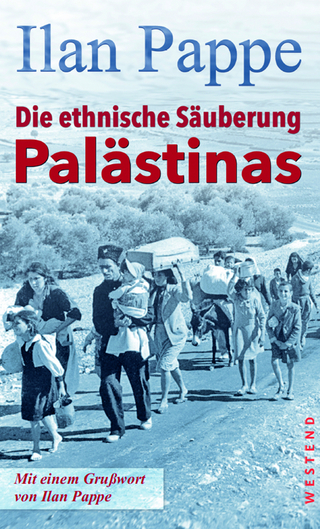
Race on the Move
Stanford University Press (Verlag)
978-0-8047-9220-2 (ISBN)
Race on the Move takes readers on a journey from Brazil to the United States and back again to consider how migration between the two countries is changing Brazilians' understanding of race relations. Brazil once earned a global reputation as a racial paradise, and the United States is infamous for its overt social exclusion of nonwhites. Yet, given the growing Latino and multiracial populations in the United States, the use of quotas to address racial inequality in Brazil, and the flows of people between each country, contemporary race relations in each place are starting to resemble each other.
Tiffany Joseph interviewed residents of Governador Valadares, Brazil's largest immigrant-sending city to the U.S., to ask how their immigrant experiences have transformed local racial understandings. Joseph identifies and examines a phenomenon—the transnational racial optic—through which migrants develop and ascribe social meaning to race in one country, incorporating conceptions of race from another. Analyzing the bi-directional exchange of racial ideals through the experiences of migrants, Race on the Move offers an innovative framework for understanding how race can be remade in immigrant-sending communities.
Tiffany D. Joseph is Assistant Professor of Sociology and Affiliated Faculty of Latin American and Caribbean Studies at Stony Brook University.
Contents and AbstractsIntroduction: Migration and Racial Movement across Borders chapter abstractThis chapter describes how racial ideals move across borders via individuals who migrate between countries. This discussion is framed by scholarly debates regarding racial frameworks in the United States and Brazil and argues that migration can be used to comparatively examine race in both countries using the experiences of Brazilian return migrants in the city of Governador Valadares. The chapter introduces the theoretical concept of the transnational racial optic and concludes with a brief discussion of the author's positionality in conducting the study.
1The Town That Uncle Sam Built chapter abstractThis chapter introduces readers to the city of Governador Valadares (GV). It explores the history of the U.S. presence there and how migration has transformed the city into a place where people, money, and culture flow to and from Brazilian immigrant enclaves in the United States. The chapter concludes with a discussion of how this transnational context shaped Valadarenses' racial conceptions before migrating.
2Deciphering U.S. Categories chapter abstractThis chapter illustrates how the transnational racial optic influenced migrants' negotiation of U.S. categories. It explores their racial self-classifications, interpretation of the Latino and Hispanic categories, and perceptions of white racial classification in the United States and Brazil. This chapter describes how migrants used Brazilian racial classification norms to find their racial place in the United States.
3Navigating the Racial Divide chapter abstractThis chapter delves into returnees' perceptions of and experiences with the U.S. racial divide in terms of discrimination, interpersonal relationships, and residential segregation. The discussion is framed by migrants' comparisons of black Americans—whom migrants perceive as upwardly mobile but racist—and black Brazilians—whom migrants perceive as socially disadvantaged but less racist. Migrants discover that in spite of overt racism in the United States, Americans of different races experience more social mobility than Brazilians.
4Classification after the Return Home chapter abstractThis chapter explores migrants' renegotiation of their racial and skin tone classifications after their return migration and incorporates the perspectives of nonmigrants. The chapter compares returnees' and non-migrants' classifications and examines both groups' perceptions of the relationship between sun exposure and skin color. This chapter shows that migrants use U.S. racial classification norms to resituate themselves within Brazilian categories.
5Making America in Brazil chapter abstractThis chapter examines how returnees remit U.S. racial ideals to GV by comparing returnees' and non-migrants' views of racial stratification in Brazil. It explores differences in these groups' perceptions of racial democracy, manifestations of racism, and black Brazilians. The chapter illustrates how the transnational racial optic facilitated a shift in returnees' racial conceptions after their U.S. migration experience. The chapter concludes with a discussion of how both groups believe U.S. migration has changed race relations in GV.
6Social Consequences of the Transnational Racial Optic chapter abstractThis chapter discusses how race, socioeconomic status, and gender influenced the extent to which the transnational racial optic influenced returnees' racial conceptions. The chapter also examines how migration altered their post-migration racial attitudes and behaviors, including their interactions with non-migrants, their transnational investment in whiteness, their opinion of Brazilian racial quotas, and their views of civic engagement. The chapter concludes by discussing how the transnational racial optic may facilitate a remaking of race in Brazil.
Conclusion: Toward Global Racial (Re)Formations chapter abstractThe conclusion summarizes the book's theoretical contributions, namely that return migration provides a nuanced vantage point for exploring the impact of migration, how racial ideals in Brazil and the United States are converging, and how the transnational racial optic can alter social constructions of race via migration. These contributions are framed within a discussion of how Brazilian migrants can enhance the study of the racial assimilation of U.S. immigrants amid debates on the Latin Americanization of U.S. race relations. The chapter then addresses how migrants' transmission of racial ideals between countries has the potential to yield global racial reformations, with implications for the study of racial classification, stratification, and discrimination in various countries.
| Erscheint lt. Verlag | 25.2.2015 |
|---|---|
| Reihe/Serie | Stanford Studies in Comparative Race and Ethnicity |
| Zusatzinfo | 13 tables, 7 figures, 3 illustrations, 1 map |
| Verlagsort | Palo Alto |
| Sprache | englisch |
| Maße | 152 x 229 mm |
| Gewicht | 454 g |
| Themenwelt | Geschichte ► Teilgebiete der Geschichte ► Kulturgeschichte |
| Sozialwissenschaften ► Soziologie ► Allgemeine Soziologie | |
| ISBN-10 | 0-8047-9220-8 / 0804792208 |
| ISBN-13 | 978-0-8047-9220-2 / 9780804792202 |
| Zustand | Neuware |
| Informationen gemäß Produktsicherheitsverordnung (GPSR) | |
| Haben Sie eine Frage zum Produkt? |
aus dem Bereich


